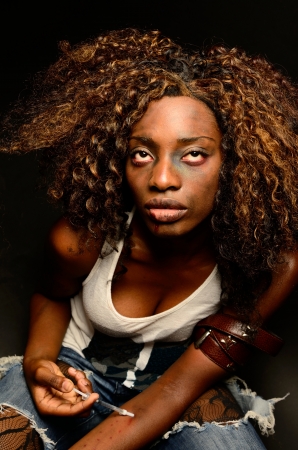The Rise of Natural and Organic Hair Dyes
In recent years, natural and organic hair dyes have surged in popularity across the United States. This shift is largely driven by health-conscious consumers who are increasingly wary of the harsh chemicals traditionally found in conventional hair color products. Influenced by the broader clean beauty movement, Americans are now seeking out alternatives that promise not only vibrant color but also safer, more environmentally friendly ingredients. The demand for transparency in ingredient lists and the desire to minimize exposure to synthetic substances have propelled both small indie brands and major retailers to expand their natural hair dye offerings. As a result, shoppers can now find plant-based and organically certified options on mainstream shelves—from boutique salons in Los Angeles to national chains like Whole Foods. This trend isnt just about aesthetics; its deeply rooted in a growing awareness of personal wellness, sustainability, and ethical sourcing. For many U.S. consumers, choosing a natural or organic hair dye is as much about aligning with their values as it is about achieving a new look.
Ingredients: What Makes a Hair Dye ‘Natural’ or ‘Organic’
When it comes to natural and organic hair dyes, what actually sets them apart from conventional chemical dyes? The difference lies primarily in the ingredients—and understanding these can help you make a more informed choice for your hair health. Let’s break down the most common components found in both types of hair dye and clarify what “natural” and “organic” labels really mean according to U.S. regulations.
Common Ingredients Comparison
| Ingredient Type | Natural/Organic Hair Dyes | Conventional Hair Dyes |
|---|---|---|
| Main Coloring Agents | Plant-based powders (henna, indigo, cassia), botanical extracts, fruit or vegetable pigments | Synthetic chemicals (paraphenylenediamine – PPD, ammonia, resorcinol, peroxide) |
| Preservatives | Vitamin E, grapefruit seed extract, essential oils | Parabens, formaldehyde releasers, synthetic preservatives |
| Conditioning Additives | Aloe vera, coconut oil, argan oil, shea butter | Silicones, mineral oil, artificial conditioners |
| Fragrance & Color Stabilizers | Essential oils, herbal infusions | Synthetic fragrances, artificial color stabilizers |
The Truth Behind ‘Natural’ and ‘Organic’ Labels in the U.S.
Natural: In the United States, there is no strict FDA definition for “natural” when it comes to cosmetics or hair dyes. This means brands can use the term quite loosely—even if only a small percentage of the product contains plant-derived ingredients. Always check the ingredient list rather than relying solely on marketing claims.
Organic: For a product to be labeled as “organic,” it must comply with USDA standards. Products labeled “100% organic” must contain only organically produced ingredients. Those labeled simply “organic” must contain at least 95% organic ingredients. However, not all hair dye ingredients—especially coloring agents—are available in certified organic forms.
Why Ingredients Matter for Your Hair Health
Conventional dyes rely heavily on synthetic chemicals that can penetrate the hair shaft deeply but may also cause irritation or allergic reactions in sensitive individuals. Natural and organic options typically avoid harsh chemicals and focus on gentler plant-based alternatives; however, they may not deliver the same intensity or longevity of color as their synthetic counterparts.
![]()
3. How Natural and Organic Hair Dyes Work
Natural and organic hair dyes rely primarily on plant-based ingredients like henna, indigo, cassia, and sometimes herbal extracts to impart color to the hair. Unlike traditional chemical dyes that use ammonia and peroxide to open the hair cuticle and deposit synthetic pigments deep into the cortex, these natural formulas typically coat the outer layer of the hair shaft or bind gently to the keratin surface.
The Science Behind Plant-Based Color
When you apply a natural dye—such as henna—the active coloring molecules (lawsones in henna) penetrate slightly into the hair shaft and bond with keratin proteins. This creates a semi-permanent stain that can last several weeks. Indigo, often used to achieve darker shades, works similarly by layering on top of previous applications or blending with other botanicals for a range of tones.
Color Longevity: How Long Does It Last?
Natural and organic dyes usually don’t last as long as conventional box dyes. Most users find that color starts fading after 4-6 weeks, depending on how often they wash their hair and what products they use. Because these dyes do not chemically alter your hair’s structure, they tend to gradually wash out rather than grow out with a harsh line of demarcation.
Color Payoff: What Results Can You Expect?
The vibrancy of natural dyes is generally subtler compared to synthetic options. For example, henna imparts rich coppery reds or auburns but won’t deliver bright blue or platinum blonde results. Darker shades are possible when combining henna with indigo, but achieving dramatic color changes (like going from black to blonde) isn’t possible without bleaching—which is not compatible with most natural dye systems.
Limitations of Natural and Organic Hair Dyes
While plant-based dyes are gentler on your scalp and reduce chemical exposure, they do have limitations. They’re less predictable—final results can vary based on your original hair color, texture, and porosity. Also, gray coverage may be uneven, often resulting in lighter highlights rather than full concealment. Lastly, if you want instant or drastic changes in shade, natural and organic dyes might not deliver the level of transformation you expect from salon-grade chemical products.
4. Are Natural Hair Dyes Actually Healthier for Your Hair?
With the rising popularity of natural and organic hair dyes in the United States, many consumers are asking whether these alternatives truly offer a healthier option compared to traditional chemical-based dyes. To answer this, it’s essential to assess their safety, potential allergens, and overall impact on hair health from an American dermatological perspective.
Assessing Safety: Chemical vs. Natural Ingredients
Traditional hair dyes often rely on synthetic chemicals like ammonia, peroxide, and paraphenylenediamine (PPD), which can cause irritation or allergic reactions in sensitive individuals. On the other hand, natural and organic dyes usually use plant-based ingredients such as henna, indigo, or beetroot extracts. While these natural ingredients are less likely to contain harsh chemicals, they are not entirely risk-free. According to the American Academy of Dermatology (AAD), even plant-derived products can cause contact dermatitis or trigger allergies in some people.
| Type | Common Ingredients | Potential Allergens | Dermatology Concerns |
|---|---|---|---|
| Traditional Hair Dyes | Ammonia, PPD, Peroxide | PPD, Ammonia | Irritation, Allergic Reactions |
| Natural/Organic Hair Dyes | Henna, Indigo, Cassia | Henna, Essential Oils | Contact Dermatitis, Mild Allergies |
Potential Allergens: Not Always “Hypoallergenic”
It’s a common misconception that natural products are automatically hypoallergenic. In fact, some natural dyes—particularly henna and certain essential oils—can provoke allergic responses. Dermatologists in the U.S. recommend performing a patch test 48 hours before using any new dye product, regardless of its “natural” label.
Expert Advice: Listen to Your Scalp and Skin
The AAD warns that both synthetic and botanical ingredients may lead to scalp sensitivity or eczema flare-ups in predisposed individuals. Therefore, consumers with sensitive skin or a history of allergies should be particularly cautious when trying any new hair dye.
Overall Hair Health Impact: Moisture and Damage Control
Natural dyes generally lack the strong oxidizing agents found in conventional dyes. This means they tend to be gentler on the hair shaft—resulting in less dryness or breakage over time. However, they might not provide the same long-lasting color or gray coverage as traditional options. For Americans seeking a balance between hair health and effective color results, it’s vital to weigh both your personal sensitivities and your desired outcome.
In summary, while natural and organic hair dyes may reduce exposure to certain harsh chemicals and can be a safer alternative for many users, they are not universally allergy-free nor guaranteed to be completely gentle on every scalp or hair type. Consulting with a board-certified dermatologist remains the gold standard for personalized advice.
5. User Experience: What to Expect with Natural Hair Dyes
Switching to natural and organic hair dyes is a growing trend among American consumers who value safer ingredients and eco-friendly options. However, making the switch comes with its own learning curve. Here’s what you should expect in terms of application, maintenance, results, and common challenges when transitioning from conventional dyes.
Application Process: Slower, But Gentler
Applying natural hair dyes like henna or plant-based powders usually takes more time than using traditional chemical formulas. You’ll often need to mix the dye yourself, let it sit for activation, and leave it on your hair longer—sometimes up to several hours. While this can be time-consuming, many users find the process gentler on the scalp and less likely to cause irritation or allergic reactions.
Pro Tip:
Do a strand test before full application to preview color results and minimize surprises.
Maintenance: Frequent Touch-Ups Required
Natural hair dyes tend to fade faster than permanent chemical dyes. Expect to refresh your color every 3-4 weeks. Since these products don’t contain harsh fixatives, they wash out gradually rather than leaving clear regrowth lines. This makes roots less noticeable but requires more consistent upkeep if you want vibrant results.
Practical Maintenance Tips:
- Use sulfate-free shampoos to extend color longevity.
- Avoid hot water when washing your hair.
- Limit sun exposure as UV rays can speed up fading.
Results: Subtle Shades & Unique Tones
If you’re hoping for dramatic transformations or ultra-light blondes, natural dyes might not deliver those results. Most plant-based formulas work best for enhancing your existing shade or adding rich, earthy tones—think deep browns, warm reds, or soft blacks. The final color also depends heavily on your starting hair color and condition, so results may vary from person to person.
Realistic Expectations:
You’re more likely to achieve natural-looking hues than bold fashion colors with organic dyes.
Common Challenges Faced by Americans
- Limited Shade Range: Options are fewer compared to synthetic dyes, especially for lighter or cooler tones.
- Preparation Time: DIY mixing and longer processing times can feel inconvenient for busy lifestyles.
- Scent & Texture: Some users find the earthy smell or gritty texture of plant-based dyes unusual at first.
Troubleshooting Advice:
If you experience uneven color or patchiness, ensure thorough mixing and section your hair carefully during application. Consider professional salon services specializing in natural products if DIY attempts fall short.
In summary, adopting natural and organic hair dyes in the U.S. means embracing a slower but safer beauty ritual with unique aesthetic results. With realistic expectations and a little patience, many consumers find the trade-offs worthwhile for healthier hair and peace of mind.
6. Bottom Line: Should You Make the Switch?
When deciding whether to switch to natural or organic hair dyes, there’s no one-size-fits-all answer—it really comes down to your hair type, personal values, and what you want from your color. If you have a sensitive scalp, allergies, or damaged hair, natural and organic options may reduce irritation and help maintain hair health over time. For those who prioritize sustainability and avoiding harsh chemicals, plant-based formulas align with eco-conscious values and offer peace of mind about ingredient safety.
However, if you’re seeking dramatic color changes (like going from brunette to platinum blonde) or long-lasting gray coverage, traditional salon dyes still outperform most natural alternatives in terms of intensity and durability. That said, many people find a happy medium by alternating between gentle, botanical dyes for touch-ups and reserving conventional dyes for major transformations.
Ultimately, the best approach is to assess your goals: If shine, scalp comfort, and environmental impact are top priorities, experimenting with high-quality natural or organic brands could be worth it. Always check ingredient lists for allergens—even “natural” products can trigger reactions—and do a patch test before full application. Consult your stylist about what will work best for your unique hair type and lifestyle. Remember, making the switch doesn’t have to be all-or-nothing; it’s about finding the right balance that aligns with your personal needs and desired results.


